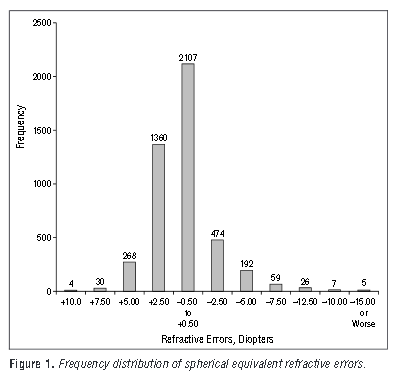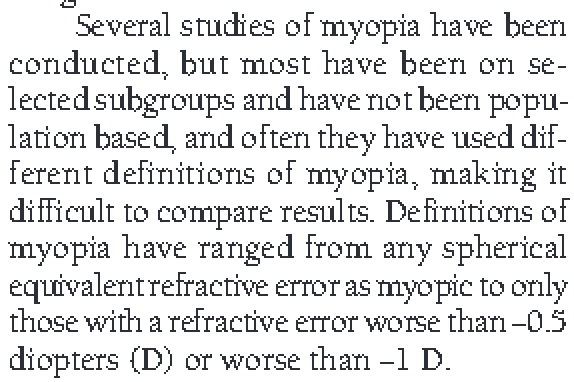quote=buffy
> Google Scholar seems to think this one?
https://www.sciencedirect.com/science/article/pii/S0140673612602724
Yuk. No thanks. Looking it up now to see how many study participants. Totally meta-analysis. Figure 1 is just a definition of myopia – well, duh, who would be reading the article without already knowing that. Figure 2 looks like just a lack of complete reporting. People in India, China and Malaya had other more important things to worry about in 1987 to 1992. Sci-hub crashed twice so can’t read full paper. But don’t see any charts of incidence vs strength there. Can you see how many participants in the study in total, and in “1987 to 1992”?
https://www.ncbi.nlm.nih.gov/pmc/articles/PMC6288521/
“Top 100 cited articles in ophthalmic epidemiology between 2006 and 2016”.
We’re not doing epidemiology so it’s not particularly relevant. I wonder if any of the studies on the environmental causes of myopia can explain the observed drop in number of myopia cases in the 20 years prior to 1895.
But let’s see. 9 articles on myopia.
“The most frequently cited article in the field of ophthalmic epidemiology was published in Ophthalmology by Rose KA and colleagues in 2008 into the topic of myopia, highlighting that higher levels of total time spent outdoors were associated with less myopia”. ¿So what – correlation does not imply causation, and there’s no way whatever to separate cause and effect in this case. “Association between myopia and glaucomatous optic nerve damage”, relevant for glaucoma perhaps but not myopia incidence.
Possibly useful as a list of 59 journals.
https://www.ncbi.nlm.nih.gov/pmc/articles/PMC1123161/
Again epidemiology, not useful. Starts the abstract with an unproved assumption. Let’s see whether there’s any proof in the article. Nah, another meta-analysis. No proof. No use, just unfounded conjecture.
So those three aren’t any use, all meta-analysis, and conjecture based on minimal information. Apart from use as a list of 59 journals that may accept our publication.
Let’s go back to what you said earlier.
buffy said:
I think the Orinda study is probably the biggest one dealing with myopia. There are studies of refractive error with bigger numbers, but they are not all myopes. Major author to look for would be Zadnik.
Oh, and Mutti. They’ve done quite a bit of stuff. But mainly with children, not over a lifetime.
“Initial cross-sectional results from the Orinda Longitudinal Study of Myopia.
Zadnik K1, Mutti DO, Friedman NE, Adams AJ.”
“https://www.ncbi.nlm.nih.gov/pubmed/8233371”:
“predominantly Caucasian children”
“Cross-sectional results from 530 children ages 5 to 12”.
530 isn’t many. When you add in the time factor, that’s only in the same size ballpark as our study. It’d be strange if we turned out to have the biggest lateral study of myopia (at certain ages) as well as the longest longitudinal study.
Hold on, only a relatively small proportion of the Orinda study are actually myopes? So of the only 28 children in the study of age 12, fewer than half are actually myopes?
I think I can use their Figure 1a.
“This sample’s refractive error decreased toward emmetropia with age from an average of +0.73 D at age 6 years to an average of +0.50 D by age 12 years.”
What!? That doesn’t look right.
(Whew, computer came back after half hour power outage, didn’t lose this post).

